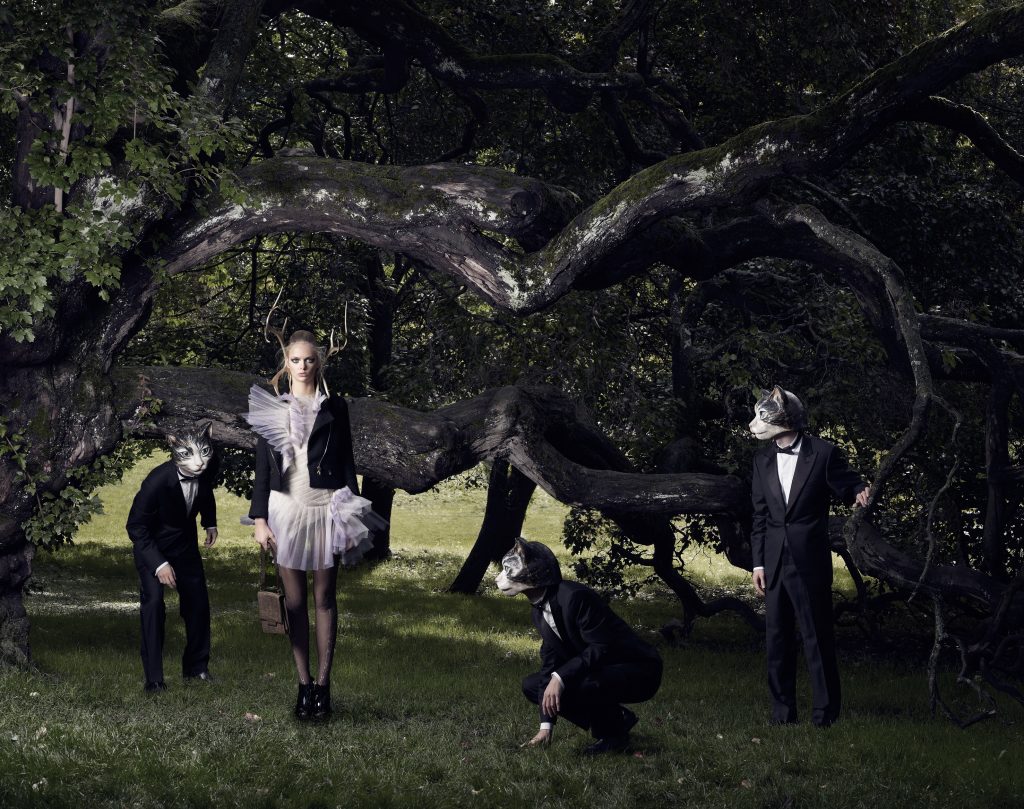
Throughout many cultures cats are considered to be mystical creatures whose eyes are windows peering in from other worlds and if you’re a cat owner yourself you may have wondered that yourself at 3 in the morning when your cat is demanding food while pawing at your chest. Cats have always been objects of folklore and superstition throughout the ages. Whether it be tales of good or bad luck; stealing a baby’s breath or someone’s soul; or simply about being a witch’s familiar, cat myths abound in practically every land. Here are a few of them to steal your peace away:
- For centuries, folks in England believed that a cat is liable to climb into an infant’s crib and “suck” the child’s breath until it suffocates and dies. In some versions of the tale, the cat is jealous because the newborn infant has suddenly deprived it of attention; other versions say it’s not jealousy but the scent of milk on the baby’s lips that inspire them.
- Iceland, for all of its twee elven aesthetic and excellent quality of living, has some pretty savage Christmas stories. It seems that Íslendingar grow up in fear of the ferocious Jólakötturinn, the Yule Cat, who prowls the frozen countryside around Christmastime, looking for humans to eat. But this giant, bloodthirsty cat-monster isn’t looking to make naughty children into his meal, as you might expect. He’s got an eye for fashion and is looking for people—kids, adults, whatever—who aren’t wearing fine new clothes for Christmas Eve.
- A certain sect of Buddhism once practiced in the former kingdoms of Siam and Burma believed that when you die, if you’re holy enough, your soul is transferred to a cat for safekeeping. In this way, special souls lived in a sort of feline purgatory, and when the kitty died, the chaste soul would ascend to paradise. Although Siam is now called Thailand, a ritual that’s still strictly observed during the coronation of a new Thai king is to present him with a live cat adorned in gold jewelry. A Siamese one, of course. In this way, it’s thought, the spirit of the old king is able to witness the coronation, through the cat’s eyes.
- In ancient Scottish and Irish folklore, an oversized black cat with a trademark white patch on its chest, called the Cat Sìth, skulks around at night looking for souls to steal. At wakes and funerals, to protect the poor deceased’s soul from the wily Cat Sìth, various distractions were supplied to deter or distract it, such as catnip or loud music. A fire was also never burned in a room with a corpse, since every cat loves to curl up by a warm fireplace.
- Superstitious fishermen in the British Isles might throw a bit of fish back into the sea “for the cat.” This mythical cat was a woman who “knew more than a Christian should” (a.k.a. a witch) who went sailing with her fiancé, a fisherman. On the voyage, she cursed the whole fleet by calling up a storm to wreck the ship, as revenge upon the crew members who thought it was unlucky to have a woman on board and wanted her to be drowned. She was turned into a four-eyed cat who haunted the ocean, and the fishermen still throw her a morsel of food to appease her, lest she try it again. Many sailors and fishermen also think that if a cat falls overboard, a storm will show up and the ship will be capsized.
- Medieval people thought that cats were the Devil’s personal soul couriers, ferrying spirits to Hell. The three hairs on the tip of a cat’s tail were said to be “the devil’s hairs,” which compelled the cat to stay up all night, prowling, when all Christian creatures should be asleep. Early Christians believed that if a cat sat on a grave, Satan possessed the soul of the deceased. Also, if two cats were seen fighting on a grave during a funeral or near a dying person, it was believed that they were, in fact, an angel and a devil fighting over that person’s soul—in cat form.
Story by Natalia Kolove.

